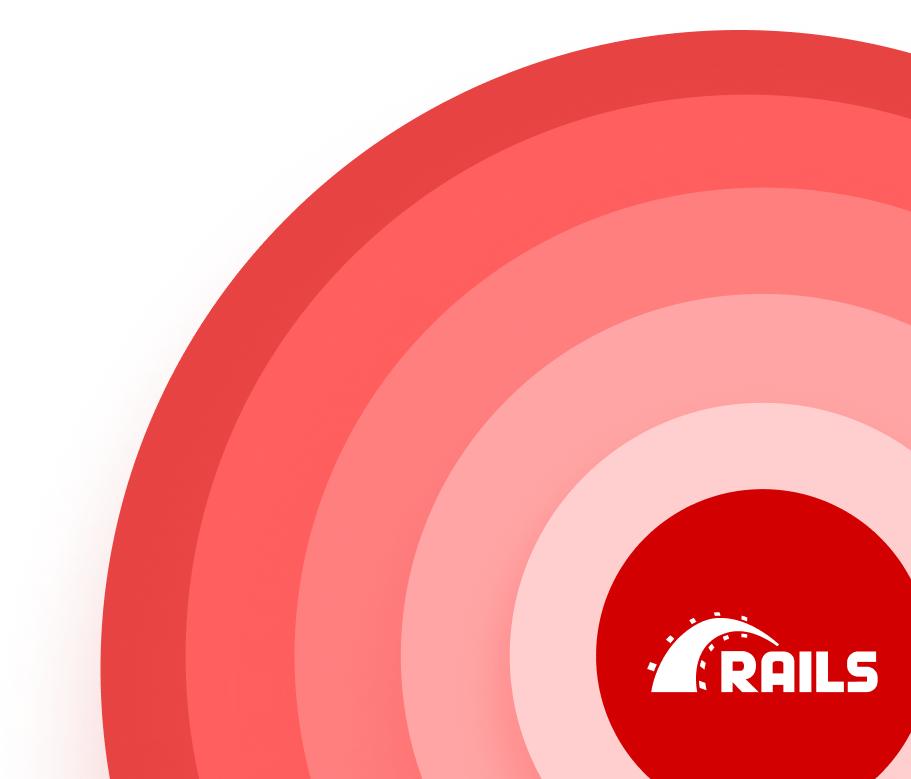
Ruby on Rails: A Preferred Full-Stack Framework for SaaS Applications
Ruby on Rails (AKA RoR) is follows the Model-View-Controller (MVC) architectural pattern. This way, we divide the application into 3 main areas to perform different roles. With the Ruby on Rails framework, it is safe to say,
- 30-40% faster development compared to other frameworks
- Multiple implementations of an application—monolithic, microservices, serverless, etc.—depending upon the nature of the application
- 2-4 weeks of development time to quickly release your application on the production server
- Open-source framework, so there is no licensing cost for using this framework
- Seamless integration with databases like PostgreSQL, MySQL, and MongoDB
- Can be developed using Ubuntu OS, so there is no cost for a licensed OS
- A large number of 3rd party services have libraries for API integrations available for Payment, Authentication, Analytics, Networking, Streaming, etc.
- Handling millions of transactions and users per second
Ideal Applications for Ruby on Rails
- Data-Driven Applications 📊
- User login and module-specific activities.
- Dashboards, admin panels, and reporting features.
- File uploads and media streaming (video/audio).
- API integrations to fetch or post data.
- Extract information from uploaded files (PDFs, spreadsheets, images, videos, audio).
- E-Commerce Platforms 🛒
- Comprehensive support for online stores.
- Map-Based Applications 📌
- Location-based services and features.
- Backend for Mobile Applications 📱
- Reliable API-based backend solutions.
Why Ruby on Rails for SaaS?
Ruby on Rails has been the most preferred full-stack framework for SaaS development over the last 15 years. With just one full-stack developer, founders can have a production-ready application in 2-4 weeks, enabling them to start generating revenue from day one. The following points have more details to move forward with Ruby on Rails with confidence.
Faster Development
- Rails has an extensive collection of gems (libraries/plugins) that handle common tasks such as authentication (Devise), authorization (Pundit/CanCanCan), payment processing (Stripe), etc., available to be used in Rails applications.
- In-built libraries like Active Storage, ActionCable, etc. help achieve functionalities much faster with very few lines of code.
- The Active Record Object-Relational Mapping (ORM) layer simplifies database operations and makes it faster to read and write the database.
- Additionally, Rails provides built-in solutions for common web development needs, such as session management, form handling, routing, asset management, and email sending.
- Rails offers scaffolding and command-line generators to quickly set up controllers, models, views, and migrations. This accelerates the development of CRUD (Create, Read, Update, Delete) functionality.
- Rails has built-in support for testing with tools like RSpec and MiniTest. These tools make writing and running tests easy, ensuring code reliability without spending extra effort setting up testing infrastructure.
- Because of the Convention over Configuration(CoC) principle, development becomes much faster.

Cost Effective
- Rails itself is free and open-source, meaning there are no licensing costs. Many gems and tools in the ecosystem are also free, significantly reducing upfront costs.
- Rails is a full-stack framework, and one full-stack developer can work on both sides of programming. This reduces development costs to a great level.
- Faster development due to various reasons, it is quick to deliver features. Quickly reviewing, accepting/rejecting features leads to a better and faster discovery of the right product.
- Mainly, Rails applications are developed and deployed on Linux OS. This reduces the Operating System’s licensing cost.

Security
Rails includes out-of-the-box protections for many of the most common web security threats, such as:
- SQL Injection: The use of parameterized queries in Active Record automatically sanitizes inputs, preventing SQL injection attacks.
- Cross-Site Scripting (XSS): Rails escapes output in templates by default, ensuring user-provided data cannot execute malicious scripts.
- Cross-Site Request Forgery (CSRF): Rails includes CSRF tokens in forms and validates them server-side to prevent unauthorized actions.
- Mass Assignment: Rails uses strong parameters to restrict which model attributes can be assigned via forms, protecting against mass assignment vulnerabilities.
- Rails handles session management securely by default:
- Sessions are stored in a server-side location (encrypted cookies or databases).
- Session data is automatically signed and encrypted to prevent tampering and interception.
- Rails enforces HTTPS by supporting SSL/TLS enforcement via configurations ensuring secure communication over HTTPS.
- With gems like BCrypt, Rails makes it easy to store hashed and salted passwords.

Scalability
- Rails applications can be deployed across multiple servers to handle increased traffic. Using tools like load balancers(e.g., NGINX, HAProxy), applications can distribute requests efficiently across a cluster of servers as Horizontal Scaling.
- Rails supports background job processing using tools like Sidekiq, Delayed Job, and Resque. These tools allow intensive tasks (e.g., emails, data processing) to be handled asynchronously, freeing up resources for real-time requests.
- Rails includes built-in support for caching at multiple levels.
- Rails is highly compatible with modern cloud platforms like AWS, Heroku, and Google Cloud, enabling effortless horizontal and vertical scaling.
- Support for containerization with Docker and orchestration tools like Kubernetes further enhances scalability.
- Rails can operate in API-only mode, serving as a backend for front-end frameworks like React, Angular, or Vue.js. This separation allows independent scaling of the frontend and backend.
Compatibility
- Rails supports a variety of databases, including PostgreSQL, MySQL, SQLite, Oracle, and even NoSQL databases like MongoDB (via gems).
- Rails supports creating RESTful APIs and GraphQL APIs easily, making it highly compatible with front-end frameworks like React, Angular, and Vue.js, as well as mobile applications and third-party services.
- Rails strictly follows web standards such as RESTful design, HTTP conventions, and W3C guidelines, ensuring compatibility with web browsers, APIs, and other web technologies.
- Rails can be deployed on a variety of web servers like Puma, Passenger, Unicorn, or NGINX, and supports containerized or traditional deployment strategies.
- Rails integrates seamlessly with modern testing frameworks (RSpec, MiniTest) and CI/CD tools like Jenkins, GitHub Actions, and CircleCI, ensuring compatibility in automated pipelines.

Testing
- Rails provides fixtures for quickly setting up test data. Tools like FactoryBot offer more flexibility, allowing developers to create dynamic and reusable test data.
- Continuous Integration/Continuous Deployment (CI/CD) tools like GitHub Actions, CircleCI, and Jenkins.
- Gems like SimpleCov provide detailed reports on code coverage, helping developers identify untested areas of their applications.
Frequently Asked Questions (FAQs)
1. Is Ruby on Rails slow to process?
Ruby on Rails is often labeled as slow, but performance issues usually arise from poor architecture, not the framework itself. For example, Shopify, built on Rails, handles millions of transactions seamlessly during Black Friday. With proper design and optimization, Rails can manage massive scale and support high-traffic applications effectively.
2. Is Ruby on Rails suitable for large-scale applications?
Despite misconceptions, Ruby on Rails has proven itself as a reliable framework for large-scale applications. Industry giants such as GitHub, Shopify, Airbnb, Basecamp, and Bloomberg use Ruby on Rails to power their platforms.
These companies have shown that with thoughtful architecture, proper optimization, and effective scaling strategies, Ruby on Rails can efficiently handle millions of users, transactions, and complex operations. Its track record demonstrates that it is not only suitable but also highly capable for building and managing large-scale applications.
3. Would it be difficult to find RoR developers?
Ruby on Rails is known for being developer-friendly, thanks to its simplicity, convention-over-configuration approach, and rapid development features. It has a large, active global community and some of the best documentation in the industry, making it easy for developers to learn and adopt.
The extensive library of high-quality Gems further streamlines development, attracting both experienced and new developers. With its vibrant ecosystem, finding skilled Ruby on Rails developers is generally not a challenge.
4. Can I use RoR for real-time features in my application?
Yes, Ruby on Rails supports real-time features through ActionCable, enabling live chats, instant notifications, and live updates. It also integrates with tools like Turbo Streams to simplify real-time UI interactions without heavy JavaScript, making it ideal for dynamic, interactive applications.

Performance Benchmark
High-volume transactions

- $4,646,713 per minute of transactions
- At its peak, Shopify processed 40,038 orders/minute and 254,785,624 requests/minute
- Handled 20,000,000+ unique shoppers
Used by major platforms for faster & scalable development globally

Discover the power of Ruby on Rails
for your projects!

